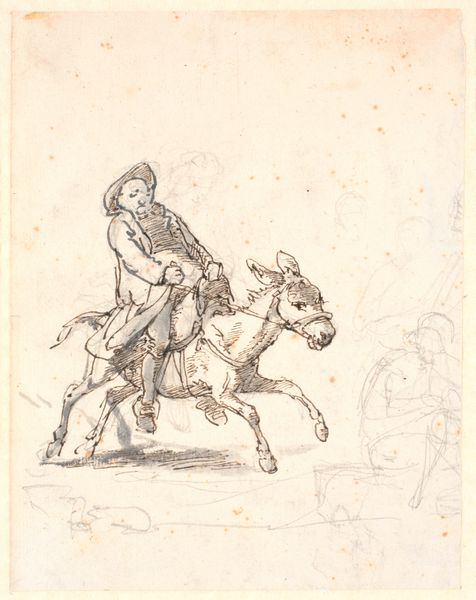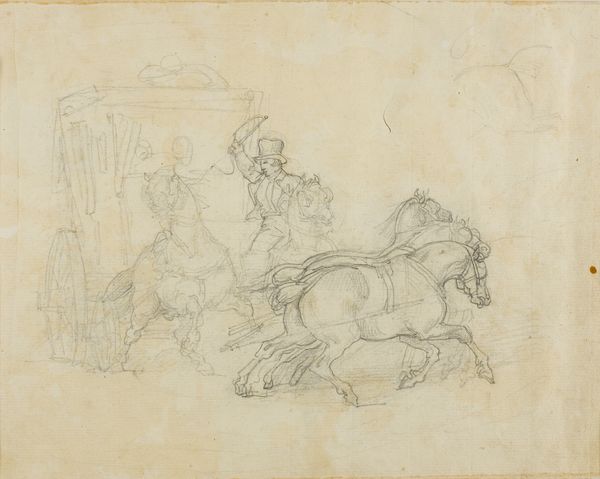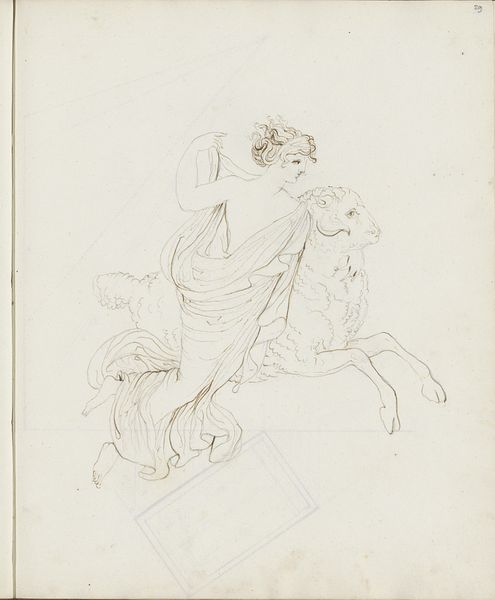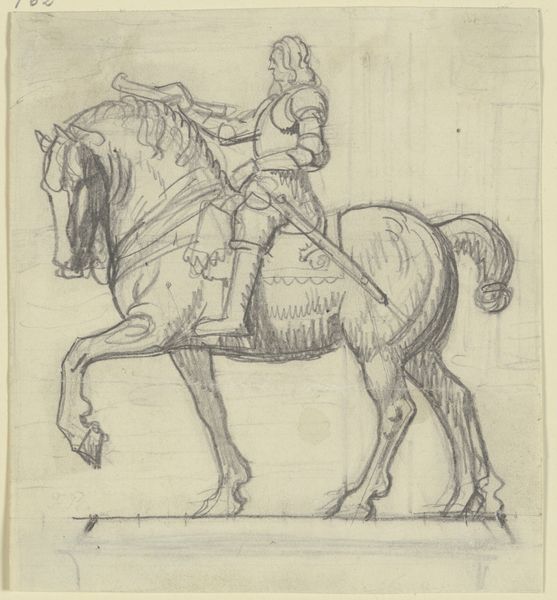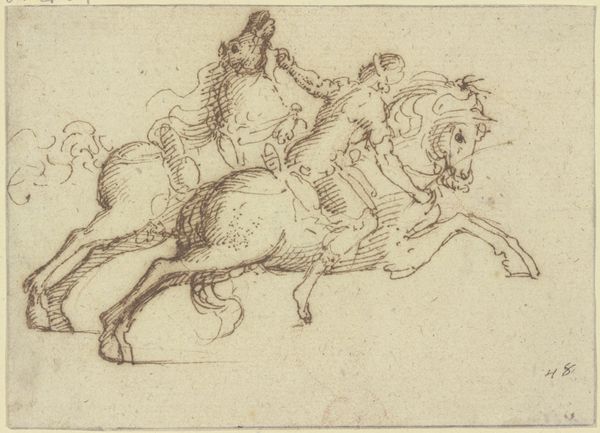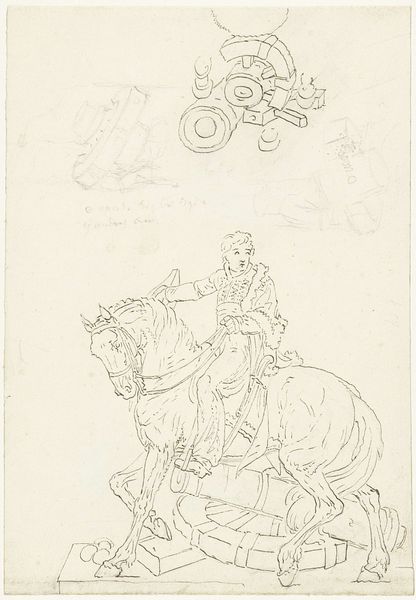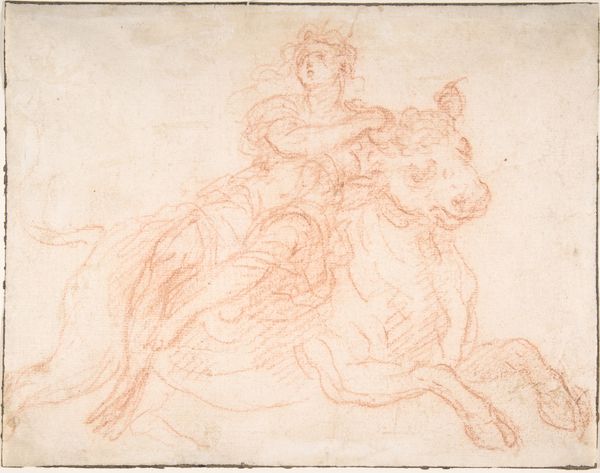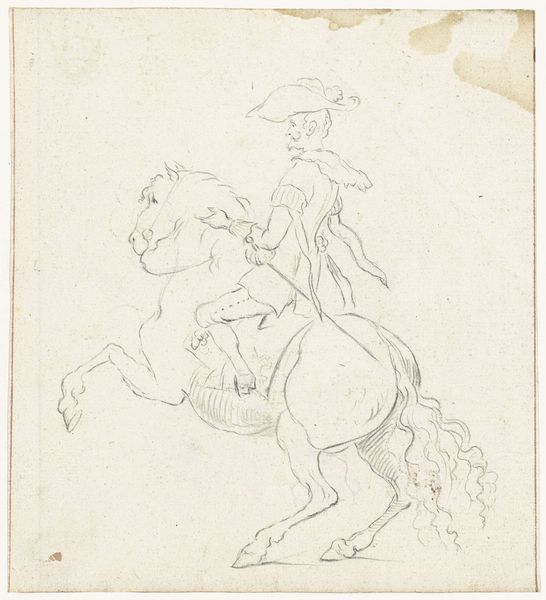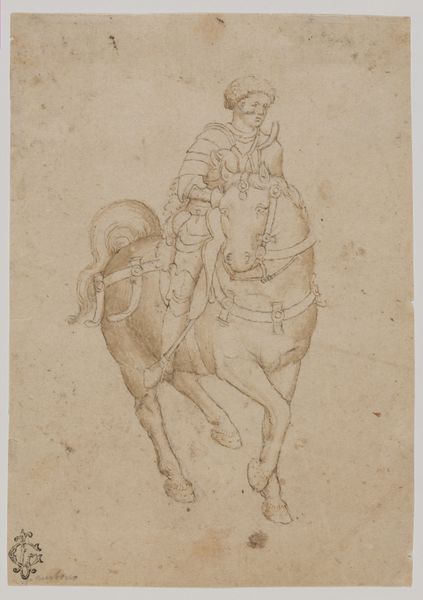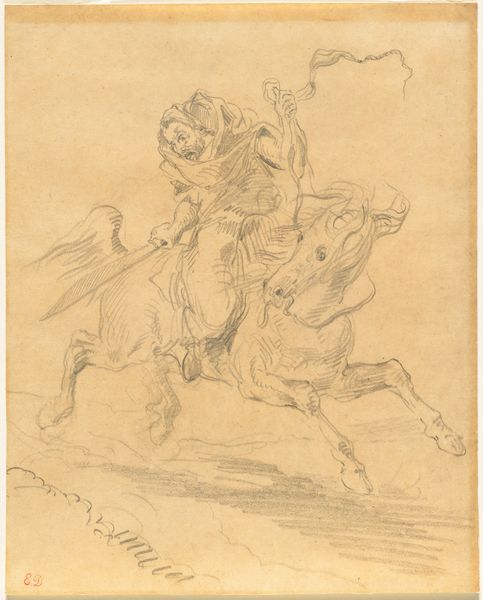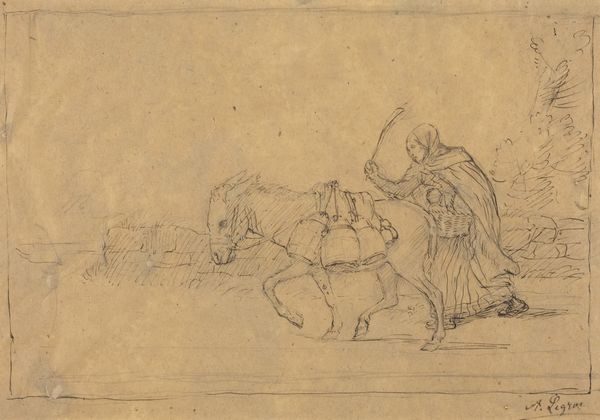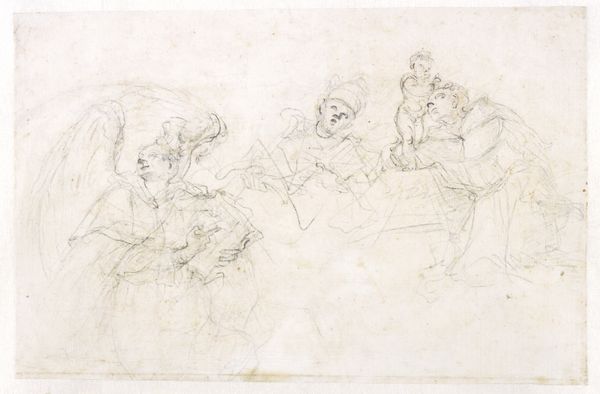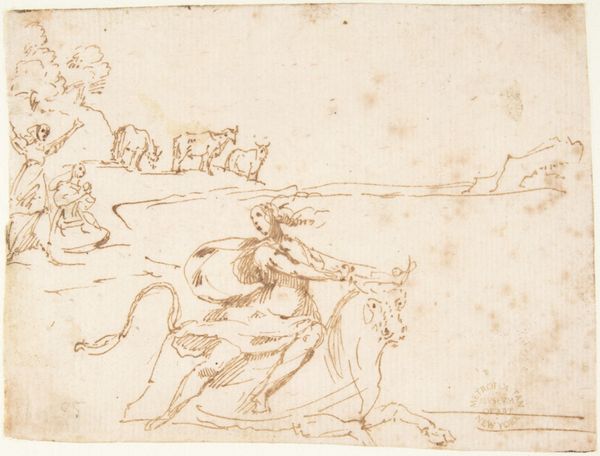
Bortførelsen. Ridende par, i baggrunden borg eller slot 1864 - 1866
0:00
0:00
Dimensions: 151 mm (height) x 173 mm (width) (bladmaal)
Curator: At first glance, there's a captivating dynamism to this simple sketch. A horse in full gallop, a couple entwined on its back, a hint of architecture in the background. What do you make of it? Editor: The frantic energy is certainly arresting. I find the rapid pencil work perfectly captures the urgency of the scene. It looks like a Romantic melodrama condensed into a fleeting moment. Curator: Precisely. This is Wilhelm Marstrand’s "The Abduction." Drawn between 1864 and 1866, the piece is currently held at the SMK, the National Gallery of Denmark. Marstrand, a major figure in the Danish Golden Age, was known for his genre scenes and history paintings that often engaged with social themes and moral narratives. Editor: Abduction, you say. I find it interesting that he chooses to portray such a complex theme through this frenetic style. The lightness of the pencil strokes lends an air of dreaminess. It makes one wonder if the woman is complicit in this 'abduction'. Look how tightly the two figures are pressed together, mimicking the formal convergence of soft pencil lines that form the human figures. Curator: Contextualizing this drawing with the wider social currents in Europe, it can be seen to tap into Romantic ideas about personal liberty. The idea of eloping, escaping constricting social norms… Did Marstrand believe in such acts of defiance, or perhaps merely portray it as a source of drama to excite viewers? That would have aligned with public sentiments at the time. Editor: Perhaps he’s playing with these social anxieties and romantic longings using form. He reduces the scenery to sparse contours. Instead of offering us visual information on landscape or architectural detail, Marstrand has directed our attention exclusively on human movement. Curator: It's hard to say definitively what Marstrand intended. He made the piece only with a pencil. As a material it would've been easier to erase, re-work and iterate upon certain components while making rapid compositional changes. However, his rendering leaves us more questions than answers regarding personal freedom. Editor: Questions indeed! Regardless of its intentionality, for me, the power of this simple sketch lies in its unresolved tension. The dynamic pose of figures invites viewers to interpret. It challenges them to grapple with what it is witnessing and to formulate meaning about individual expression. Curator: It's intriguing to think how historical conditions influenced the interpretation of images like this. Editor: Definitely something to ponder further when revisiting it.
Comments
No comments
Be the first to comment and join the conversation on the ultimate creative platform.
